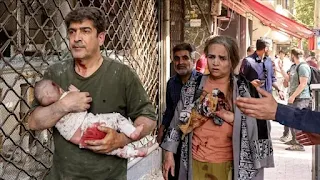the Israeli attacks resulted in the deaths of 1,100 people, 1,060 of whom were buried in official funerals held across the country. He noted that among the dead were "innocent women and children who had not yet reached puberty," as he put it.
Ohadi explained that the attacks also injured approximately 5,600 people, 160 of whom are still receiving treatment in hospitals.
On June 30, the Iranian Ministry of Health announced that the death toll had reached 935, before issuing the updated toll today.
It's worth noting that the Israeli aggression began on June 13 and continued for 12 days with US support, targeting military and nuclear sites and civilian facilities inside Iran, in addition to assassinating a number of military leaders and nuclear scientists.
Iran responded by targeting Israeli military and intelligence headquarters using ballistic missiles and drones, in operations described as the largest in the history of direct engagement between the two sides.
On June 22, the United States launched airstrikes on Iranian nuclear facilities and announced that it had "eliminated" them. This prompted Tehran to fire precision missiles at the U.S. Al Udeid base in Qatar, in a dangerous escalation that continued until June 24.
On the final day of operations, Washington declared a ceasefire between Tel Aviv and Tehran, following intensive communications through regional and international diplomatic channels.
This military escalation, the most violent between Iran and Israel, has sparked widespread international concern, particularly given the significant human losses among Iranian civilians that were later announced.




